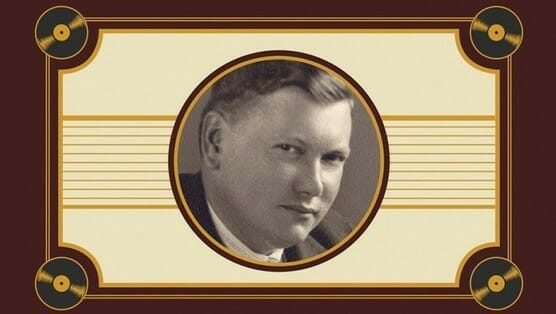Ralph Peer and the Making of Popular Roots Music by Barry Mazor

In his posthumously published memoir, The Mayor of MacDougal Street (2006), folk musician Dave Van Ronk reflects acerbically on where he and his contemporaries in the Greenwich Village folk revival of the 1950s and 1960s fit in the continuum of American folk music, and the presumptive divisions between originators and commercial performers.
“I was typed as a blues singer back in the 1950s,” Van Ronk writes. “A lot of my material comes out of the blues tradition, but overall I have more in common with someone like Peggy Lee or Blossom Dearie than I do with Mississippi John Hurt or the Reverend Gary Davis.”
Like other folksingers of his era, Van Ronk acknowledged that he made his first connection with Hurt, Davis and other “emissaries of a vanished, mythic age” through a six-LP compilation of decades-old recordings of rural musicians called The Anthology of American Folk Music. Re-released on CD in the 1990s, today the set bears the somewhat misleading title Smithsonian Folkways Recordings, as if the collected recordings were created as historical documents or future museum pieces rather than studio recordings packaged to sell.
Certainly, the preservationist/folklorist impulse of turn-of-the-century “songcatchers” and later musicologists like John and Alan Lomax, who trekked the hills of Appalachia and drove the dusty roads of the Mississippi Delta in search of authentic rural American musical styles, work songs, field hollers and ballads to document and transcribe, contributed a great deal to the survival of traditional American music. But the old 78s that inspired the reverence of future folkies on the Anthology of American Folk Music comprised not field recordings, but commercial releases recorded to capitalize on the market for “race” (rural black) and “hillbilly” (rural white) records as the music industry explored new directions in the 1920s and 1930s.
No one blazed that trail as adventurously, aggressively, profitably or indelibly as legendary A&R (artists & repertoire) man Ralph S. Peer, the subject of a compelling and eminently readable new biography by Barry Mazor. We know Mazor as a veteran music writer best known for his biography of one of Peer’s signature discoveries, “Singing Brakeman” Jimmie Rodgers, revered today as the “father of country music.”
Mazor reconstructs a fascinating parallel history to the romanticized roots-music story of field-recording folklorists. In it, Peer, a music business visionary, nimbly straddled the line between authenticity and commercial appeal, brought credibility and viability to newfound markets for race and hillbilly music, and simultaneously pushed those outsider music genres—and their leading proponents—toward the cultural mainstream.
Peer is best known as the “organizer: of the Bristol Sessions, two heady weeks of on-location recording in Bristol, Tennessee, in the summer of 1927 now widely regarded as “The Big Bang of Country Music” (so described by historian Nolan Porterfield). Peer defined and legitimized untested markets for “down home music.” He also brought song publishing front and center, fostering sustainable and remunerative careers for himself and many of the artists he discovered through decades of constant flux and volatility in the music business, and the national and world economies of the mid-20th century.
However apt a description of the enduring impact of the legendary Bristol recording sessions, “Big Bang” hardly does justice to the process and methods—years in development—that made the Bristol Sessions possible and helped launch the careers of the Carter Family and Jimmie Rodgers, along with more than a dozen other first-time rural recording artists.
A Kansas City native, Peer signed on as assistant general sales manager for the New York-based Okeh Recording Company in 1918, and scored his first race music smash hit with blues singer Mamie Smith’s “Crazy Blues” in 1920. While reports of Peer’s distaste for that record (he reportedly called it “the worst record ever made”) most likely have been taken out of context (according to Mazor), Peer’s connection to the music he discovered and recorded sprang less from personal affinity than sales strategy.
Adapting a phrase attributed to turn-of-the-century baseball legend Wee Willie Keeler, who advised other batters to “hit ’em where they ain’t,” Peer pursued the untapped race and hillbilly markets because no one else sold records in those areas. Mazor places Peer’s strategy in the context of the music industry at that time: “Where, then, would you have found engaging American roots music on record as Peer’s work at Okeh began—music recorded in the performance style of its originators, reflecting the flavor of the region and people it came from?”
Mazor chronicles Peer’s travails and experiments before Bristol that laid the groundwork for those watershed recording sessions. In the seven years between “Crazy Blues” and Bristol, Peer cut what’s generally acknowledged as the first ‘country’ record, Fiddlin’ John Carson’s “The Little Old Log Cabin in the Lane.” He also laid down work by Virginian guitarist-singer-songwriter Ernest Stoneman, who would be instrumental in scouting and assembling the breadth of talent Peer recorded in Bristol.
-

-

-

-

-

-

-

-

-

-

-

-

-

-

-

-

-

-

-

-

-

-

-

-

-

-

-

-

-

-

-

-

-

-

-

-

-

-

-

-








































